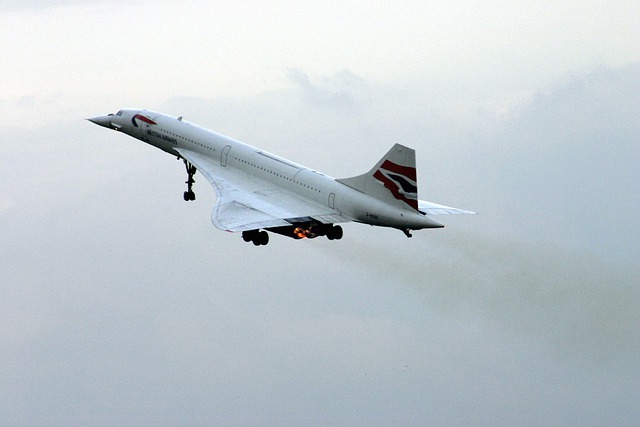What is a Supersonic Transport?
A Supersonic transport (SST) or a supersonic aircraft is a civilian supersonic aircraft which is designed to transport passengers at speed greater than the speed of sound. The technology for supersonic is over 70 years old but they were used for commercial flying much later. Before 1976, the planes were used entirely for military purposes. It’s been more than fifteen years since a supersonic passenger aircraft last operated a commercial service.
Concorde, the British-French turbojet-powered airliner was the first aircraft to carry passengers at supersonic speed of around 900 kmph, twice the speed of normal aircraft. But eventually, Concorde’s retirement was announced in 2003 due to soaring maintenance cost and other concerns after 30 years of supersonic flying.

Also Read: Aerotropolis: Airport Centric Cities
Challenges of Supersonic Transport
Concorde was definitely considered something ahead of its time but its technology could not meet today’s standards for environmental and other community concerns. There were high engine noise levels associated with very high jet velocities used during take-off and also while flying over areas near the airport which was a major problem.
In the 1960s, during a massive sonic booms test run by Air Force over Oklahoma City, residents reported hundreds of damaged windows and noise disturbances. Noise concerns were paired with environmental concerns, the International Council on Clean Transportation (ICCT) estimated that an SST burnt 5 to 7 times more fuel per person which eventually led to much more carbon dioxide emission than other usual commercial subsonic jets. Moreover, it was studied that there will be severe environmental damage to the ozone layer. The plane’s high flight pattern made scientist think its exhaust gas could be more threatening to the ozone than normal jets.
The ticket prices were as high as $12,000 a seat, that was a significant risk but ticket had to be expensive since at most only 120 passengers could fit on the plane and so price tag could not be distributed. Fuel requirement was pretty high which limited the range of journey and guzzled enough fuel that price fluctuations could hit particularly hard. Overall, British-French airliner Concorde was insanely expensive and an environmental disaster.
New age Supersonic Aircraft
A bunch of start-ups have begun to work on supersonic and hypersonic projects again in order to revive the dream that died with Concorde’s retirement and break the time barrier. One such start up is Boom which aims to pick up where Concorde left off and fix the most important things which are economic and environmental sustainability. It claims to produce an eco-friendly aircraft with net-zero carbon emissions which would fly with hundred percent sustainable aviation fuel.
Boom’s supersonic “Overture” aircraft is designed to seat between 65 and 88 people and will focus on over 500 primarily transoceanic routes that will benefit from the aircraft’s speed which is more than twice as fast as today’s normal commercial aircraft. So, a journey from New York to London would take just three hours and 15 minutes while Los Angeles to Sydney would be cut down to mere eight and a half hours. Boom supersonics’ long-term aim is to make passengers able to fly and reach anywhere in the world in four hours for 100 bucks unlike Concorde which was like a dream you hope to do once in a lifetime as it charged $12,000 for a round trip or $20,000 in today’s money.
Also Read: United Looks Towards Supersonic Transport with Start-Up Investment
Impact of Supersonic Transport on travel
If successful, supersonic airliners will eventually change the travelling behaviour of people across the world and make the entire planet dramatically more accessible. It’s an iron rule of human society that people travel to and trade with communities that are nearby more than they do with faraway lands. These aircrafts will change where people can vacation, do business, and so on. When the time and money costs of travel fall through faster transportation and more direct routes, people will go to more places more often.
In today’s world, if a city is connected to the world with direct flights, a major boost occurs in the local economic activity as the city’s business enjoy easier access to trading relationships, talent, capital and other resources. Reducing travelling time and cost would make life rich in non-economic terms, too. Researchers could get much more opportunities to share their ideas at academic conferences than ever before. World leaders could visit different nations more often. International matches in sports could become more frequent. More students can have access to education at the world’s best universities. Going for vacations within the country by car or train and outside by supersonic aircraft would take almost same time. So, there will be a major visible impact on the tourism industry as well.
So, this new era of reintroduction of supersonic airliners would help in redefining individual’s geographic boundaries and the way people perceive travelling and trading across the world. Thus, faster and cheaper travel will be very beneficial for strengthening economic growth, establishing human relationships and building up cross – cultural understanding.